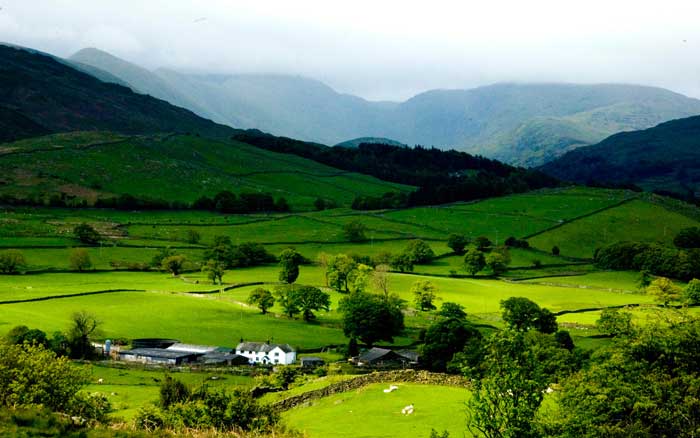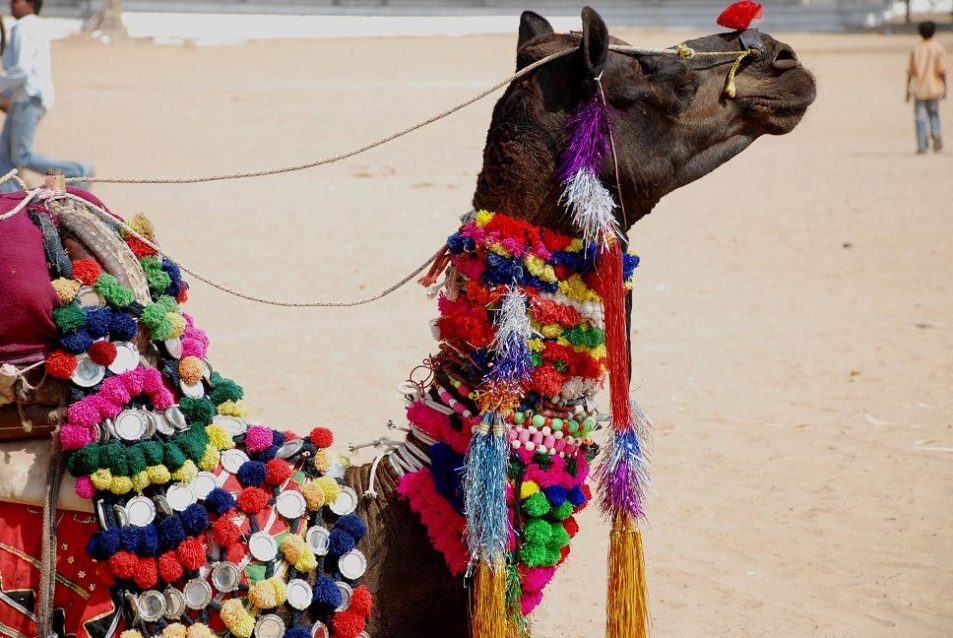As a city girl, even the hint of a rodent nearby would send shivers down my spine. I vividly remember a chilling night at the Majestic bus stop in Bangalore while waiting for a bus. I saw a horde of rats skittering about, causing my skin to crawl. Consequently, I would never voluntarily sign up for the thought of visiting a temple inhabited by 25,000 freely roaming rats. Yet, I came to realize that the role of being an aunt can often push you into previously unthinkable scenarios.
It was my wish to always be seen by my 6-year-old niece as the fearless, independent aunt, a globe-trotter thriving on adventure. Currently, she’s going through a phase of being utterly fascinated by animals. She has 4 hamsters in her house, and she always sings lullabies to get them to sleep. She was intrigued by a documentary featuring a temple in Bikaner, Rajasthan, where rats are held in reverence. The thought of visiting this unique temple filled her with an insatiable excitement. Considering that we had already scheduled a family trip to Delhi and Bikaner was a short distance away, it seemed like an easy enough desire to fulfil.
Despite my inner dread, I wasn’t willing to shatter her image of me as her brave, cool aunt who would rather face the wild world than flee from a tiny rodent. So, I decided to face my fears and wear my brave-aunt attire. We booked a Savaari from Delhi and went off to the Karni Mata, also known as the Deshnoke temple, in Bikaner. To my surprise, what I initially viewed as a daunting ordeal was an experience that exceeded all my expectations.
Legends and lore: Tracing the history and mythology of Karni Mata Temple
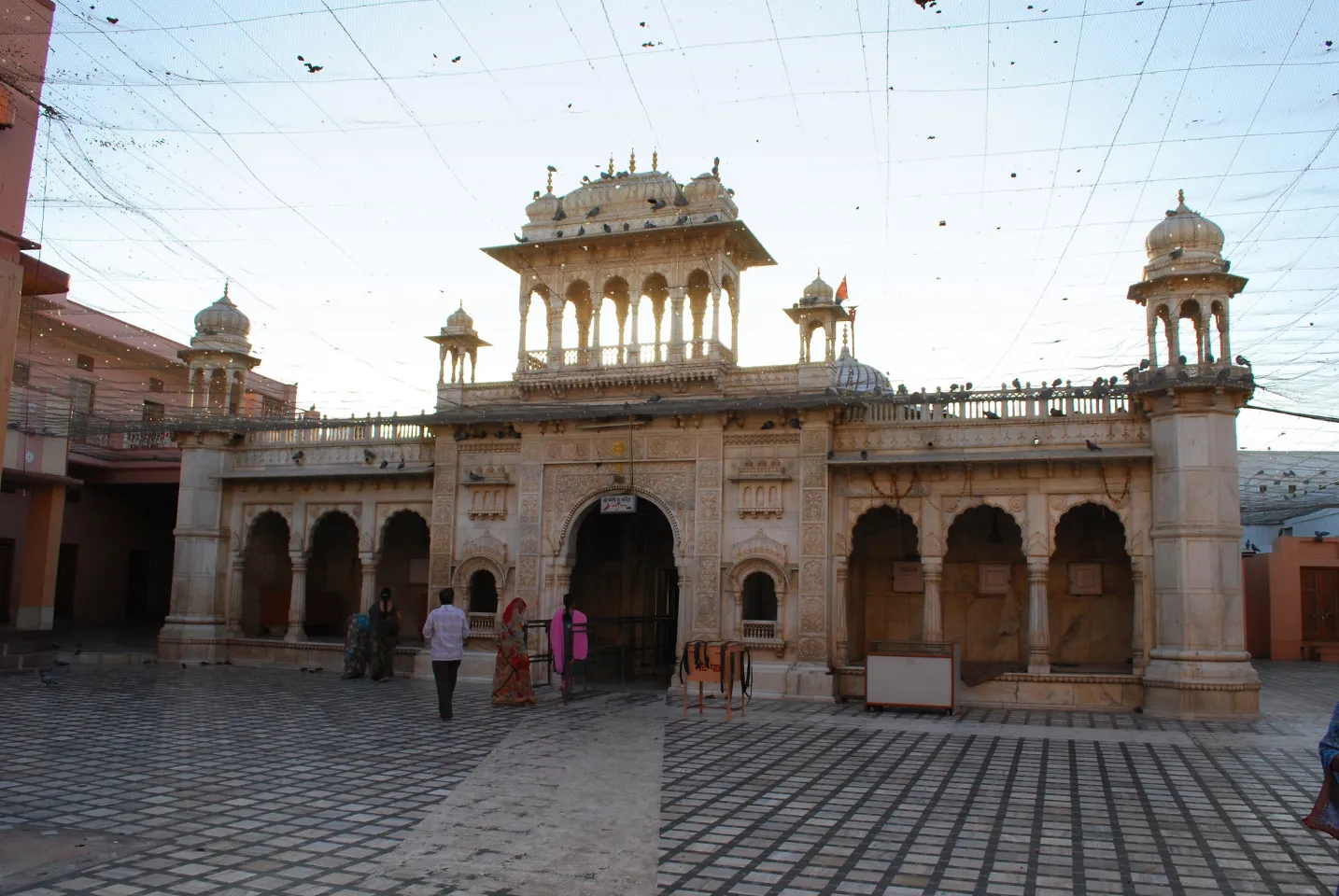
As a travel writer, my family naturally assumed I had extensive knowledge about India’s peculiar corners, including its distinctive rituals and off-the-beaten-path destinations. What they didn’t know was my paralyzing fear of rodents. Just spotting a picture of one online would send me into a tizzy, slamming my laptop shut and spending the night battling rodent-ridden nightmares. However, I wanted to uphold my image as a well-informed guide, so I researched this mysterious temple with hefty courage. The mythology I discovered turned out to be quite fascinating.
The Karni Mata Temple is nestled in the Deshnoke village, a mere 30 kilometres south of Bikaner. This 16th-century shrine was built by Maharajah Ganga Singh in the early 20th century in honour of Karni Mata, a deity thought to be an incarnation of Goddess Durga. The backstory of the temple is as extraordinary as the legendary deeds and miracles attributed to her. Karni Mata, as an embodiment of Shakti, maintained her celibacy. Yet, bound by societal norms, she married Depaji from the Charana clan. Her younger sister married him as a second wife to carry on his lineage, giving birth to four sons whom Karni Mata raised. When Lakshman, her favoured stepson, met an accidental and untimely demise, she pleaded with Yamaraj, the god of death, to restore his life.
The consequence of Yamraj’s decision
According to legend, Yamaraj was reluctant to disrupt the karmic cycle of life and rebirth, so Karni Mata devised a clever solution. She convinced him to promise that her stepson and all her descendants from the Charana clan would reincarnate as rats. These rat descendants were to live their destined lives within the temple grounds built for this specific purpose. Upon death, they would supposedly return to human form within the same clan, perpetuating the cycle under Karni Mata’s perpetual blessing.
Even today, the rats, called ‘kabas’ (children in the local language), dominate the temple, which has expanded and flourished over the centuries. The temple is frequently visited during the auspicious Navratra period twice a year. Still, it remains a magnet for tourists and devotees year-round.
Encounter with the rats of Karni Mata

Before our visit, I was very nervous and unsure of what to expect, but I tried to keep an open mind. Most devotees embark on this pilgrimage hoping to be touched or come in contact with these hallowed beings. The most devout of them even share their food and water with the rats – a fact I was terrified to hear. Fortunately, however, unlike I had imagined, rats didn’t overrun every inch of the floor. And my first thought was: these rats are not that scary. They are tiny and even a little cute. Well, don’t get me wrong. I still think seeing so many rats is dirty, and I prefer seeing other animals. But for being around so many of these creatures, it is not that bad. They are everywhere but don’t bother you unless you are directly in their path.
I noticed a rare white rat nestled in an aperture in the wall, a sight believed to symbolize the reincarnations of the goddess and her sons. Despite being of the same species as their counterparts in the temple, these white rats are albinos, lacking the dark pigmentation known as melanin. Legend believes that laying eyes on one of these elusive creatures brings good fortune and prosperity. I remember thinking that perhaps my luck would change for the better.
A unique ritual – Feeding the rats
Interestingly, providing food to the rats is perceived as making an offering to Goddess Durga. Surrounding the Karni Mata Temple, I saw countless stalls, each generously stocked with rat-friendly delicacies. My niece enthusiastically seized a handful of these treats and set about feeding as many rats as possible. On the other hand, I managed to muster enough courage to provide about ten of them. The thought crossed my mind: what a luxurious life it must be to be a rat in Deshnoke! I couldn’t help but picture the rodents in Bangalore, New Delhi, and Mumbai casting envious glances towards their pampered peers in Deshnoke.
Stepping back in time – Exploring the in-house museum
Our exploration continued as we stopped at the temple’s in-house museum. It was here that the extraordinary life and miraculous powers of Karni Mata were chronicled through a series of images and informational placards. Admittedly, the room was in a noticeable state of disrepair and left much to be desired regarding visual appeal. However, the intriguing tale of the deity, as relayed to us by the museum’s caretaker, who also acted as our impromptu guide, more than compensated for its lacklustre condition.
He belonged to the Charana clan and appeared content with his destiny of being reincarnated as a ‘kaba’ and remaining within this blessed karmic cycle. The visit proved to be very informative. I jotted down copious notes, knowing they would be helpful when writing this guide.
After immersing ourselves in the unique atmosphere of the Karni Mata Temple for the majority of the day, we eventually made our way back to our hotel in the city. As we were leaving, my niece, brimming with excitement, exclaimed, “These rats are so cute!” While I couldn’t entirely extend the same sentiment to the rats in Bangalore or elsewhere, I had to agree that these ‘kabas’ had a certain charm.
Why do people visit the Karni Mata temple?
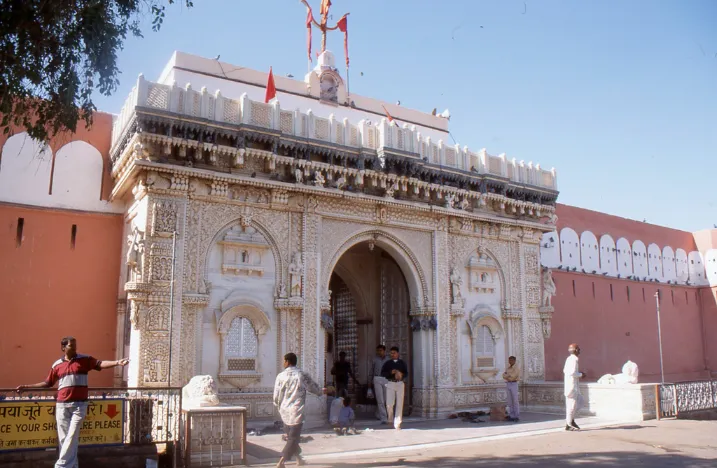
People visit the Karni Mata Temple for various reasons:
- To seek good fortune: The primary reason for the temple’s popularity is its religious significance. Devotees visit the temple to worship Karni Mata, seeking her blessings, protection, and guidance. It is believed that spotting a white rat among the thousands of black ones is a sign of good luck and fortune. Hence, many people visit the temple in hopes of catching sight of one of these rare white rats.
- To fulfil vows and offerings: Many devotees visit the temple to fulfil their vows. They offer sweets, milk, and other offerings to the rats, which are considered sacred. It is believed that these offerings can lead to the fulfilment of one’s desires or the resolution of problems. The food nibbled on by rats is also considered holy and devotees eagerly devour the leftovers.
- Unique experience: The temple, with its thousands of rats, offers a unique cultural and spiritual experience. Visitors, including tourists, witness this spectacle, unlike any other in the world.
- Cultural exploration: People visit the Karni Mata Temple to experience the rich and diverse culture of Rajasthan. The temple serves as a testament to the region’s unique traditions and beliefs.
The final verdict on the Rat Temple visit
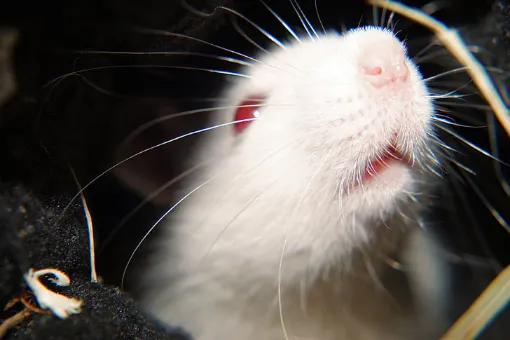
This visit was more than just a simple day trip – it was a potent reminder of the profound beliefs and the deep-rooted respect for sentiments that course through the veins of India’s diverse cultural fabric. It instilled in me a sense of hope and a newfound respect for the myriad of unusual traditions, like the frog weddings, that paint the landscape of India with such vibrant hues. The beauty of India lies in this diversity – the incredible array of unique customs and beliefs passed down through generations that make it so distinct and unique.
As the dust from the streets of Bikaner settled on our retreating vehicle, I realized I had not just survived an encounter with my fear but had embraced it, transforming it into a memory to be cherished. And just like that, an aunt’s love and a temple full of rats taught me one of the most invaluable lessons – the adventures we never plan for often leave the most profound imprints on our souls.
Pro-tips for visiting the Karni Mata ‘Rat’ Temple
If a visit to the Rat Temple is on your itinerary, here are some valuable pointers to make your experience smoother:
- Like all temples in India, visitors must remove their shoes at the entrance. If you’re not keen on walking barefoot, consider wearing socks to protect your feet from the dirt.
- A word of caution: If you accidentally step on and kill a rat, the temple’s tradition dictates that you replace it with a silver rat statue. These statues can be purchased from vendors near the temple. Despite this, exercise care when walking around the temple grounds, as rats are everywhere!
- You’ll find many restaurants near the temple and many rats. If the presence of these rodents around your food might unsettle you, consider moving further away from the temple area to dine.
How to Reach Deshnoke
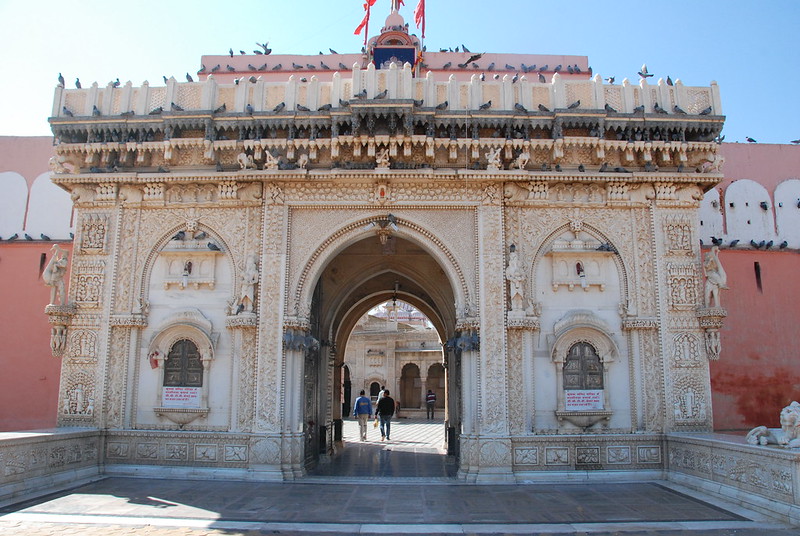
By Road
Deshnoke boasts robust road connectivity with major and minor cities within Rajasthan and the rest of India. A direct road from Bikaner City to Deshnoke simplifies the journey. State transport buses, as well as private ones, operate regularly to and from Deshnoke. However, the most convenient way to travel to Deshnoke could be by hiring an hourly car rental from Bikaner.
By Air
The nearest airport to Deshnoke is Nal Airport, situated 17 km away from Bikaner. Alternatively, Sanganer Airport in Jaipur (352 kilometres) and Jodhpur (254 kilometres) are viable options. These airports maintain solid connectivity with major airports within Rajasthan and the rest of India, with daily flights to New Delhi, Mumbai, Chennai, Bangalore, Hyderabad, Kolkata, etc. Upon reaching Jaipur, you can hire an airport taxi to Bikaner and continue towards Deshnoke.
By Train
The closest railway stations to Deshnoke are Bikaner Junction (BKN) and Lalgarh Railway Station (LGH). Both of these stations maintain extensive connectivity with other major and minor cities and towns within Rajasthan and the rest of India.
Approach your visit to the Karni Mata Temple with curiosity and an open heart. I highly recommend downloading the Savaari app for a comfortable and hassle-free journey to the Karni Mata Temple. Not only does it ensure a smooth ride, but the service also comes with knowledgeable drivers who are well-versed in local expertise. My curious niece had a bundle of questions, and our driver patiently and happily answered each one, sharing the richness of his local expertise. So embark on this journey with a sense of adventure and discovery – you never know what unexpected treasures await you in the company of the revered rats of Karni Mata Temple.
Last Updated on January 17, 2024 by Swati Deol



